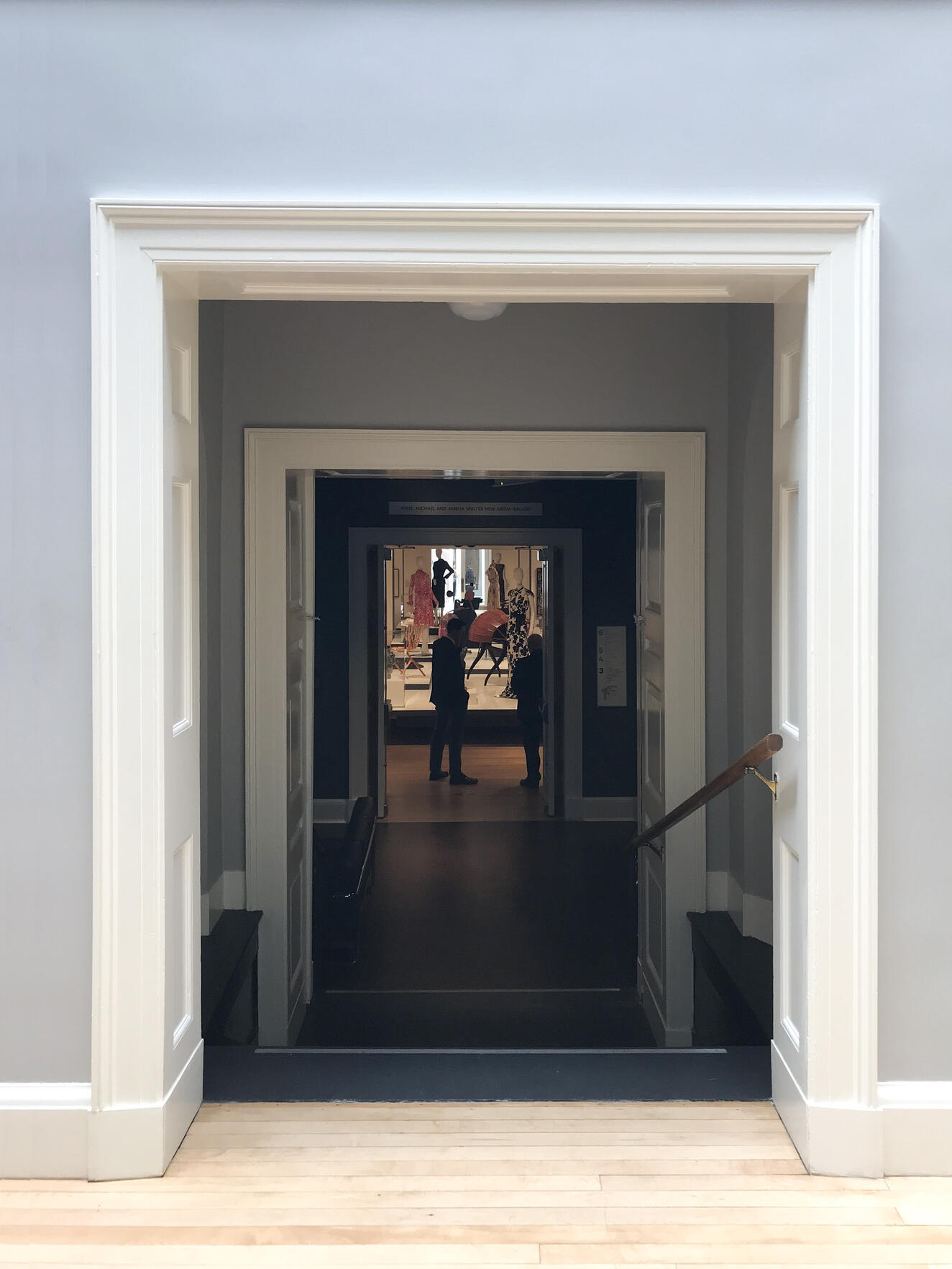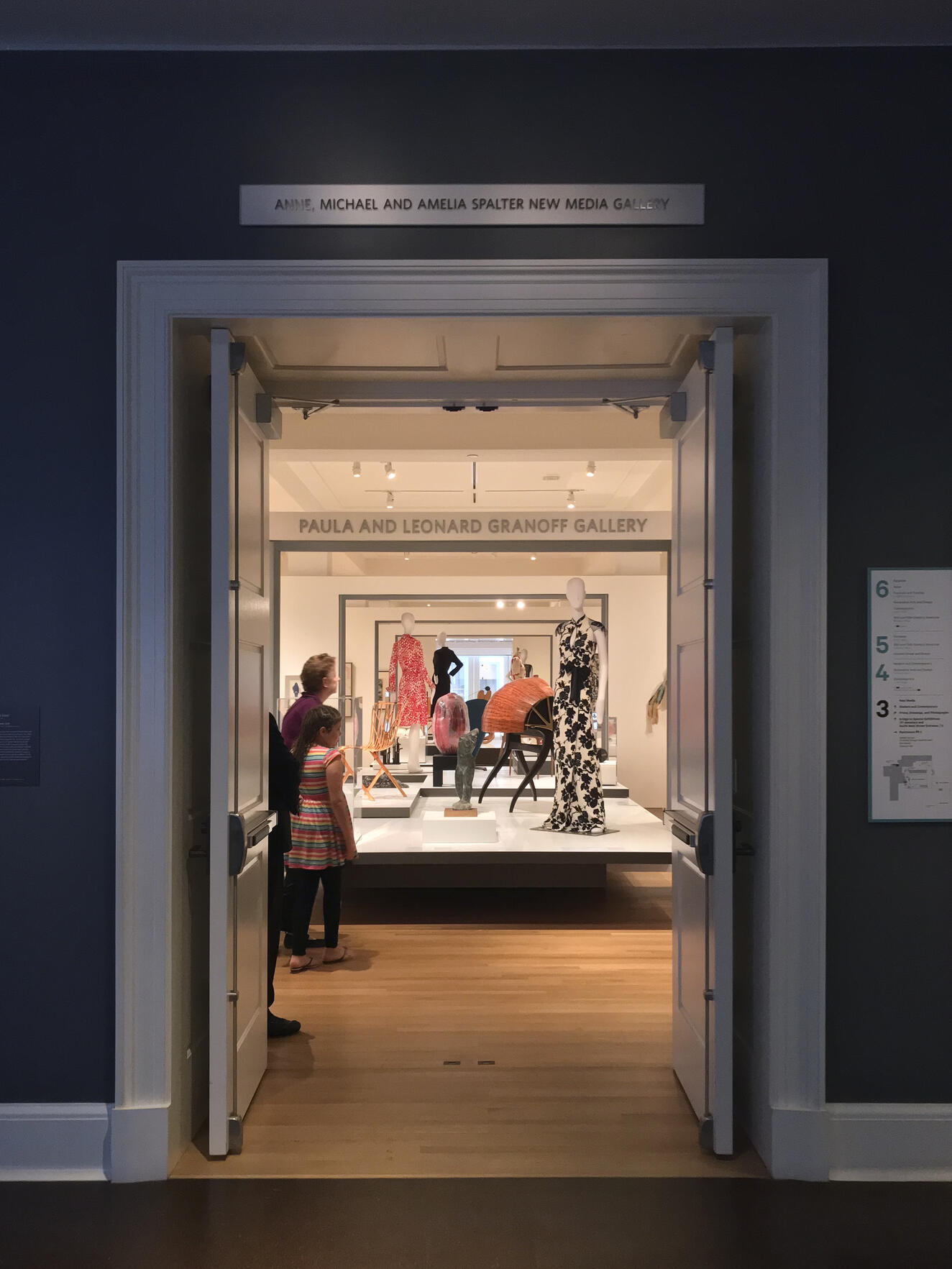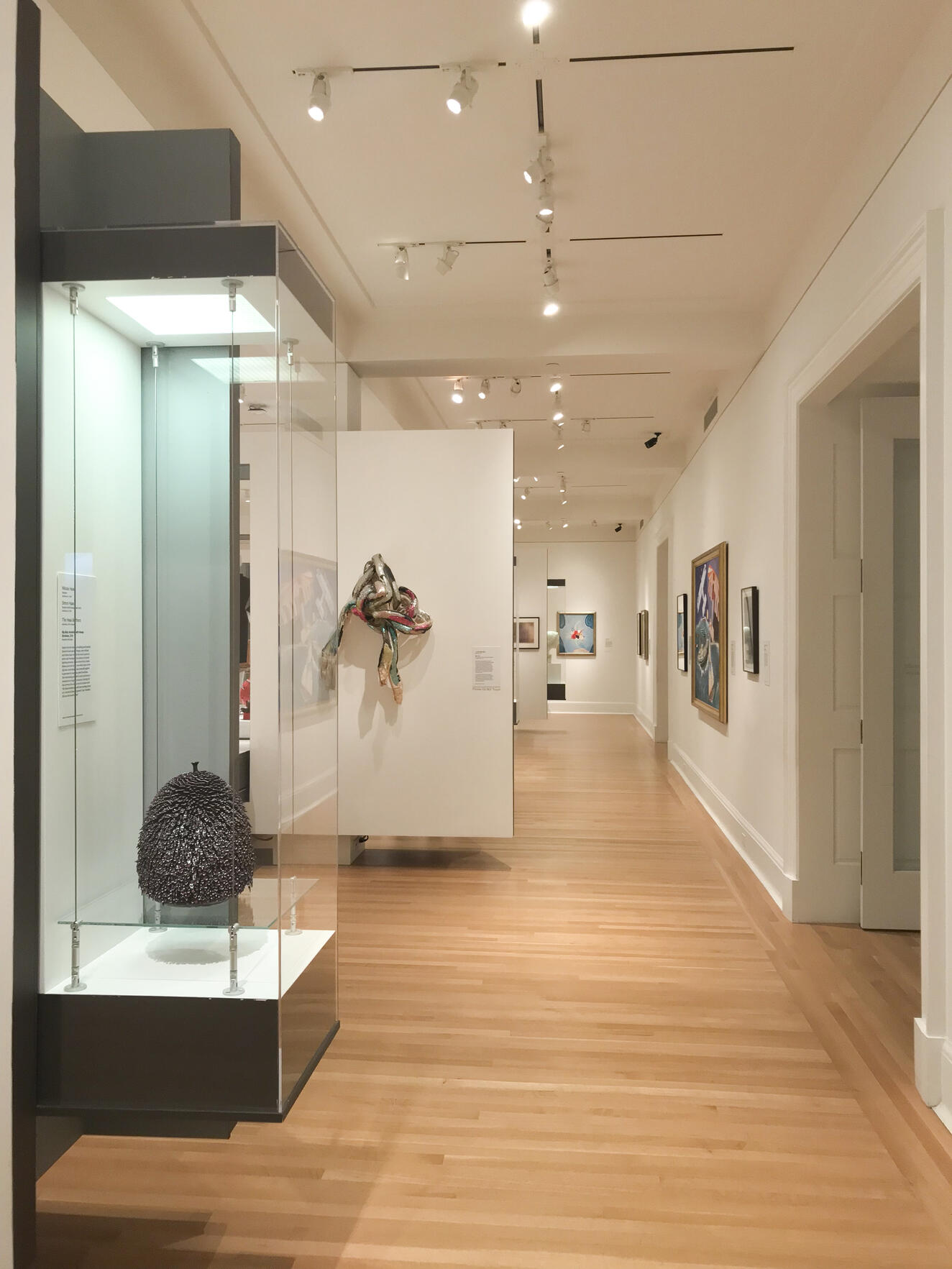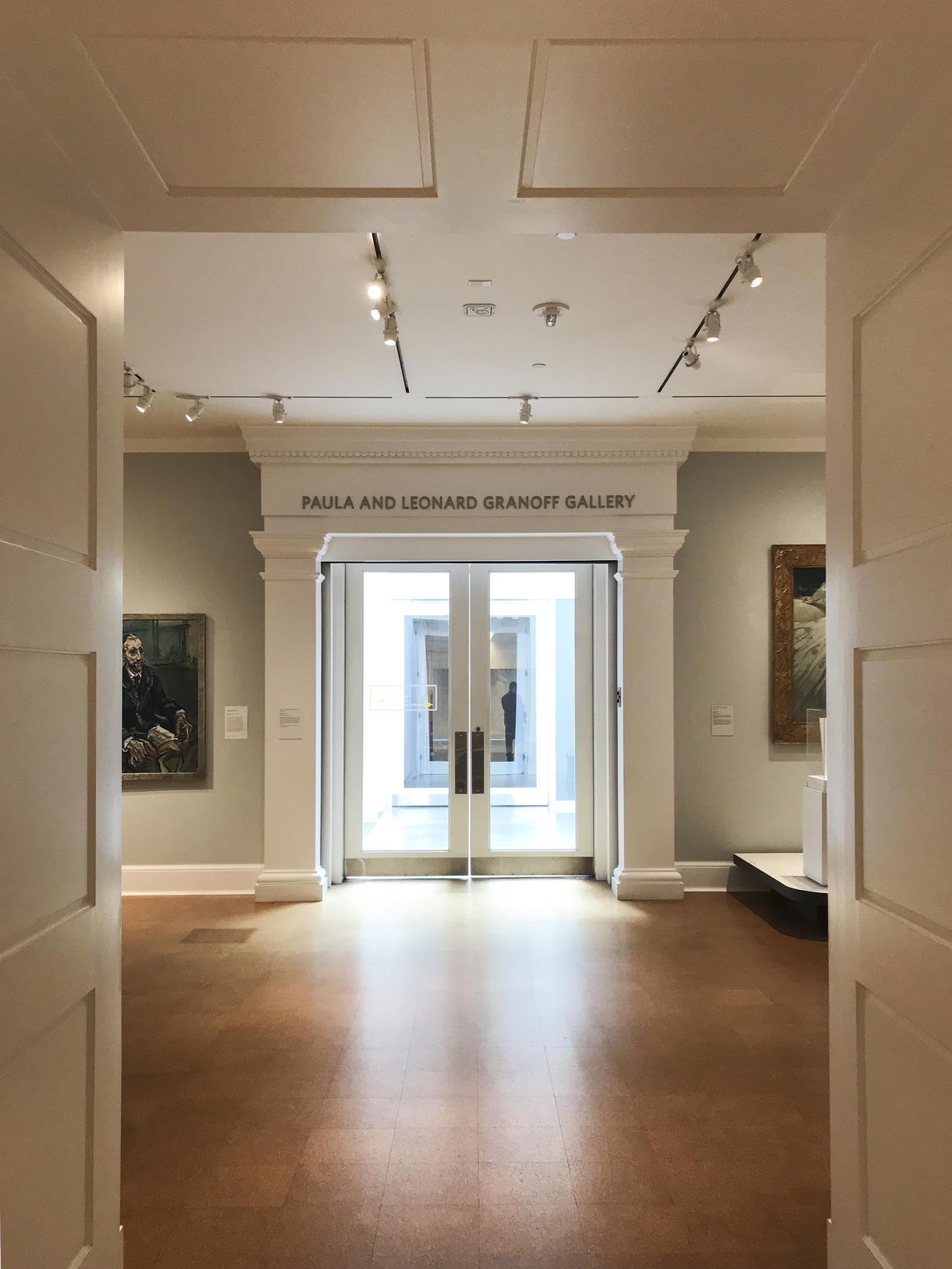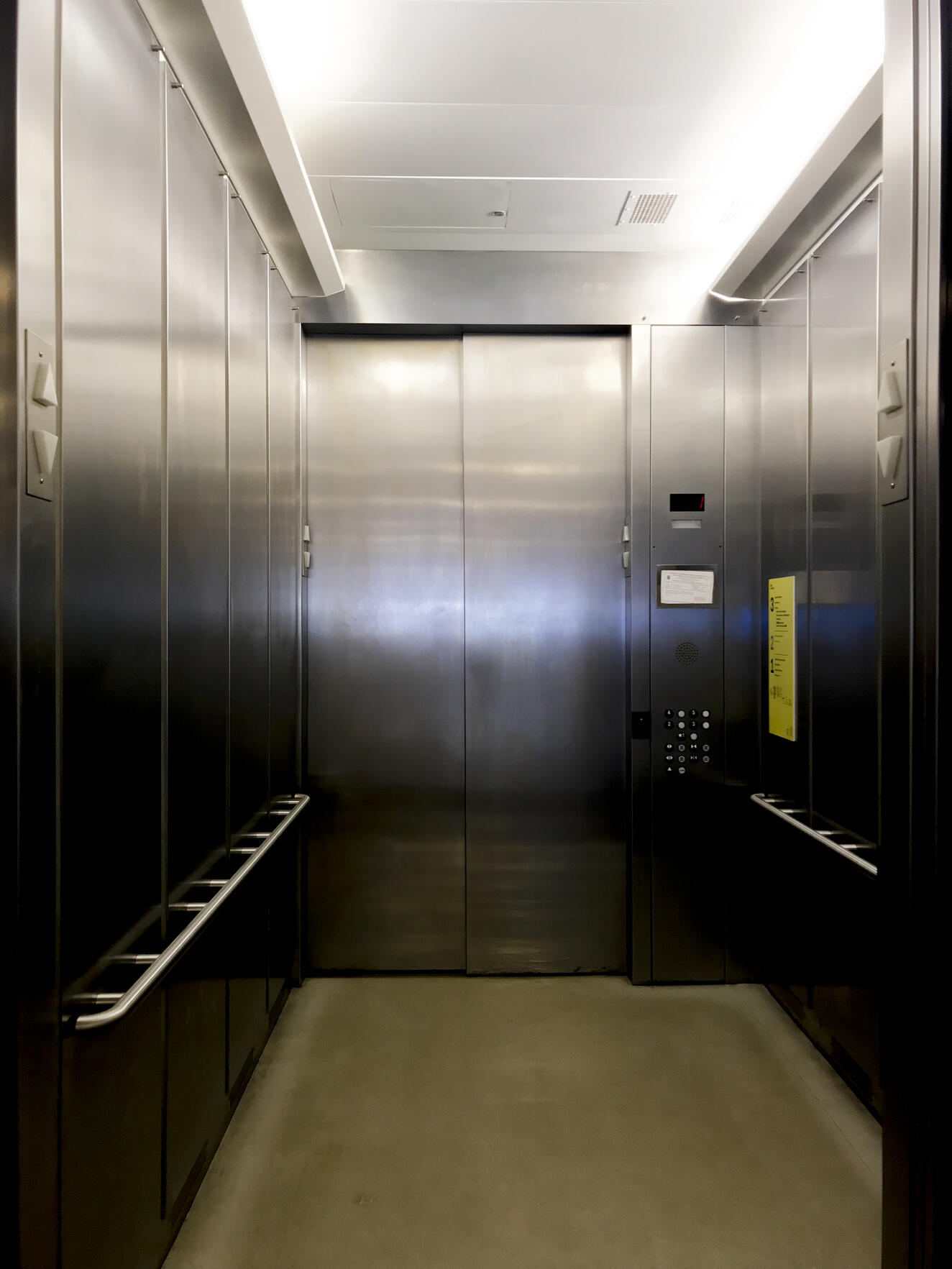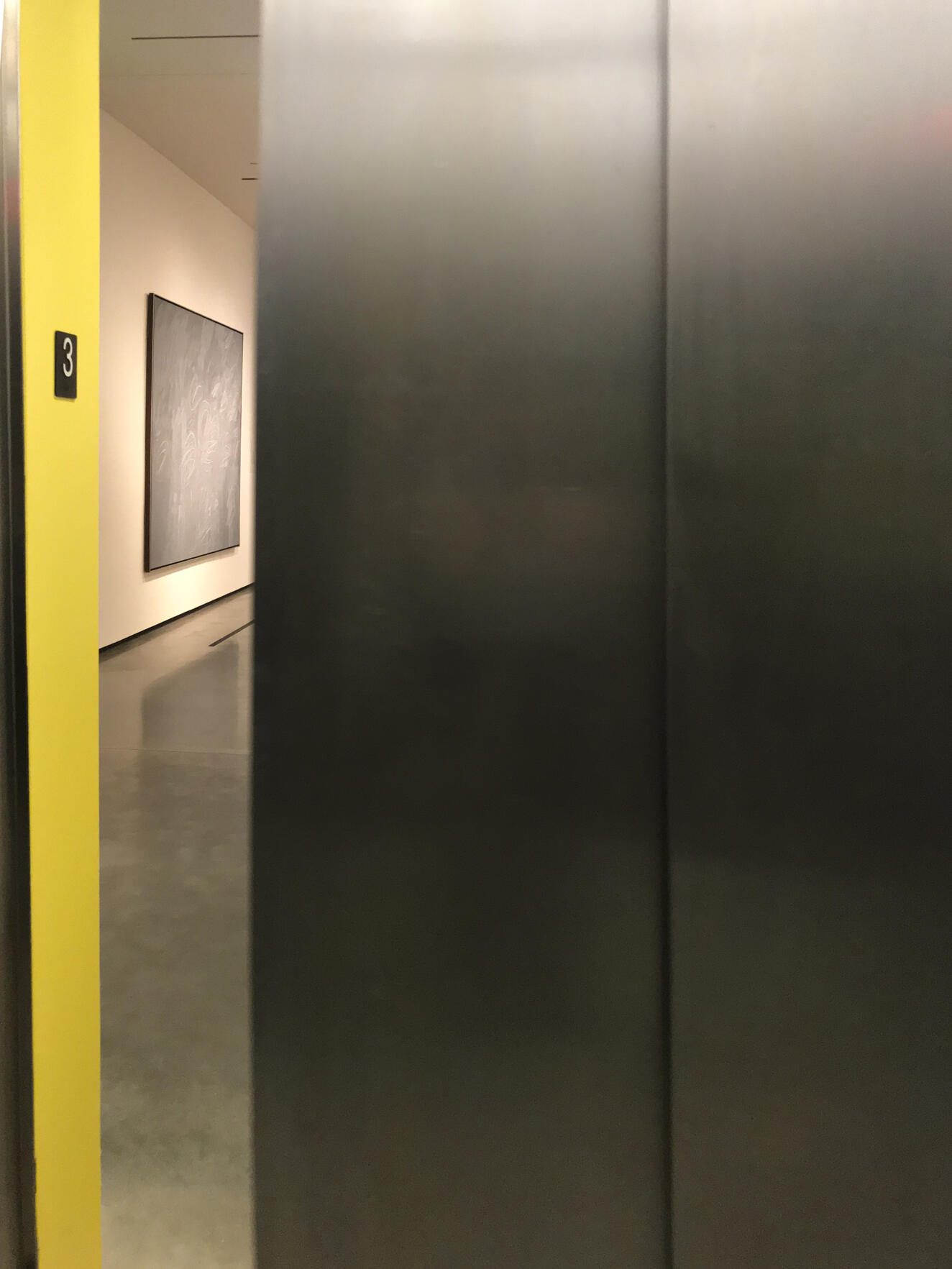Joining the RISD community after three years as an architect at an art foundation, I was drawn to the spatial properties of the RISD museum. During my summer internship in the Contemporary Arts department, I encountered the third and fourth floors daily, and found myself thinking about people’s movement in the space, the different trails each person took, and what motivated these differences. When was circulation directed by the art on display, and when was it directed by the space itself?
You are already in the museum. You’re not quite sure whether you intended to be in the museum or not, but here you are. You were in the café to grab coffee and pretend to work in the corner. But when you got up and started to walk towards the exit, you decided that a visit to the museum might count as a weekend accomplishment.
At the ticket counter, you were handed a map. You move through a door you might otherwise not have noticed, and then you’re in a big space, and you’re immediately turned around. When you walked in, you knew where the river ran: perpendicular to you. You don’t struggle to orient yourself; you don’t orient yourself at all. This first gallery is firm. It’s assertive; it seems to know where you should go, and so you surrender to it and its promise of more galleries, visible to you through layers of light and dark. You let it guide you.
You glance at the map, more out of a sense of duty than a need to locate yourself. You don’t locate yourself, but you think you might have, had you held it upside down.
You spend sometime in the rooms with the abstract paintings. The second space turns you around again, your back to that comfortingly visible path hinting of the future of your visit. A large painting, red and attention-grabbing, arrests you. When you’re done admiring it, you find yourself easily able to relocate yourself, not in relation to the outside (not to the river), but within this new orientation of spaces. You move towards the next space, and you find yourself in a high and bright stairwell. It is grand, and in stark contrast to the room ahead, directly in your line of vision, dark and a few steps down.
Here, you hesitate. There’s a staircase to one side of the space that climb upwards. Should you go up? You aren’t sure, and you worry you will miss out if you don’t take the stairs, all iron-wrought and carved wood and marble steps. But the hallway ahead is too sure to ignore, surer than the grandness of the stairs. You are enticed by what it hints at, the flashes of light in the dark, the strange sounds that reach you, and the bright rooms beyond, dense with objects (Is that a mannequin?, you wonder). You go forward.
You’re in the darker area, which feels interstitial—a threshold between two spaces. You’re taken in by the mesmerizing piece that claims this whole space. You sit down, and after a few minutes, you realize there might be something behind the white wall on the side of the gallery, but you see a stanchion on one side, not blocking your way, but blocking the only part of the future path in that direction that you could see. You don’t go there.
You’re finally in the brightest, and busiest, room of your path: a long gallery with pedestals framing the path through it. Your eyes quickly adjust to take in the light. You pass by a guard on the left of the door and smile at her. You don’t hesitate as you walk in, although there are two paths through. You go left—you can see more rooms in that direction. You’re pulled toward a dark painting, hung to the side of the mannequin that attracted you a few rooms ago.
You make your way slowly through this room. Somewhere halfway in, you realize the next spaces are even brighter, and the light pulls you, towards it, faster. You make your way into a space reminiscent of the dark prelude to the long gallery. This too feels interstitial. You even glimpse a staircase in an adjacent hall. You stop and admire a large painting to the right of a (bright, very bright) doorway. Large and high and in movement. And then you walk through the door.
You are in a glass bridge. You are almost outdoors. You recognize the street in front of you, after a moment of confusion, and you realize, the river is just there. The sculpture in the space is present, yet it doesn’t take over. You spend time with it, its bronze glowing a little with the backlight of the afternoon sun, still a little unsure of how you came to be reoriented the same way you began, and then you go ahead, back indoors.
You’re in a larger, higher space than any you’ve been in so far. When you walk in, you see the large elevators to one side. They’re bright, bordered in yellow, and you move to them without thinking. When you’re close enough to press the call button, you realize how tall they are, how metal. Imposing, cold, distorting the light of the space and reflecting it back at you in sharp shards. When the doors slide open, your skin shrinks a little at the stark difference between the open airy space you’re in, and the tight, tall metal box ahead.
When the doors close, your body forgets to hold on to the awareness of the river.
Mays Albaik was the 2018 Andrew W. Mellon Summer Intern in Contemporary Art. She is a second-year graduate student in glass at RISD.
